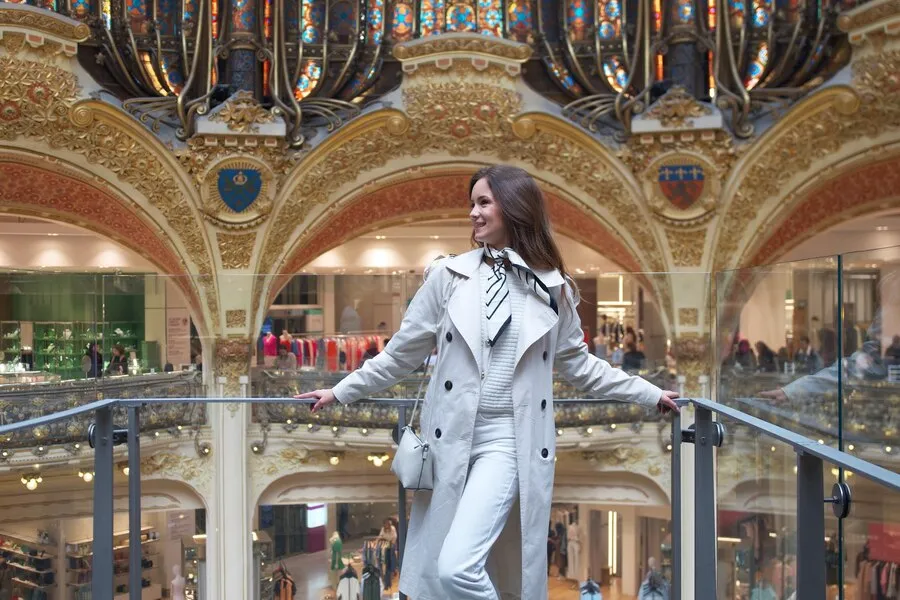Table of Contents
The Renaissance Beginnings
Florence is often hailed as the cradle of the Renaissance, a testament to its significant development. This period witnessed a rebirth of art, culture, and intellectual pursuits in the city.
In Florence, artists like Leonardo da Vinci, Michelangelo, and Botticelli honed their crafts, creating masterpieces that have stood the test of time. The Renaissance began in the 14th century and spanned over three centuries, fundamentally transforming Europe’s cultural and intellectual landscape.
This remarkable era is why many visitors opt for Florence city tours to overview Florence’s historic, artistic heritage comprehensively. Understanding this context allows visitors to appreciate the city of Florence’s profound impact on the world.
Florence city tours offer a captivating journey through the heart of Renaissance art and architecture, showcasing masterpieces by Michelangelo and Leonardo da Vinci.
Visitors can explore iconic landmarks like the Florence Cathedral and the Uffizi Gallery, immersing themselves in the city’s rich cultural heritage. With expert guides leading the way, these tours provide a deep understanding of Florence’s historical significance and artistic legacy.
Iconic Artworks in Florence
Florence boasts an array of iconic artworks, making it a paradise for art lovers. The Uffizi Gallery, an attraction drawing countless tourists, houses one of the world’s most significant collections of Renaissance art, including works by Raphael, Giotto, and Titian. If you want to connect with the art of the Renaissance, a trip to Florence is not complete without visiting this beautiful gallery.
The “Annunciation” by Leonardo da Vinci and “The Birth of Venus” by Botticelli are must-see examples. The Galleria dell’Accademia, which houses Michelangelo’s David, is another essential site. Crafted from a single marble block, this enormous statue represents the artistic inventiveness of the era with its anatomical accuracy and emotional intensity.
Florence, often described as a lively art hub, also features essential locations such as the Pitti Palace and Palazzo Vecchio. These masterpieces and historic places, including the galleries and museums, offer a vivid glimpse into the artistic zeal that defined Florence in 2024 and beyond.
Historic Sites You Can’t-Miss
Beyond its artistic heritage, Florence offers a plethora of historic sites. No visit to Florence is complete without seeing the Florence Cathedral, also known as the Duomo, with its stunning dome engineered by Brunelleschi—a marvel of architectural ingenuity that took 16 years to construct.
Nearby, the Piazza del Duomo and Piazza della Repubblica are bustling areas with a long history. The adjacent Baptistery of St. John, with its ornate “Gates of Paradise” doors created by Ghiberti, adds another layer of historical intrigue. The Santa Maria del Fiore Cathedral and Santa Reparata represent the city’s medieval roots.
The Ponte Vecchio, a medieval stone bridge, is a lively route across the Arno River, connecting different parts of this beautiful city.
Touristy attractions such as these, along with popular destinations like Piazza del Campo in Siena and the administrative hub at the Palazzo Vecchio, narrate the story of Florence from its medieval roots to its Renaissance zenith.
Visitors can make reservations for guided tours through the official website, ensuring they don’t miss critical points of interest like the palazzo and piazza.
Florentine Cuisine and Its Cultural Significance
While art and history are vital to Florence’s allure, its cuisine tells a compelling story. The city’s agricultural wealth is evident in traditional dishes such as Ribollita and Bistecca alla Fiorentina. Great food and Tuscan cuisine highlight the vibrant connection between Florence and its regional produce.
You’ll find high-end and lively cafes and boutique spots serving local wine, olive oil, and other delicacies. The lively Mercato Centrale is the hub for food lovers—a must-see if you’re looking for the whole culinary experience.
Wander through the bustling stalls, and you’ll find meat, truffle oils, and handmade pasta, each item a vivid part of the city’s gastronomic landscape. The Pitti Palace garden and various parks offer perfect places to stroll and enjoy Tuscan cuisine picnic-style. Economic development initiatives in 2023 and 2024 have enhanced tourism and public works, making it easier for tourists to explore and enjoy the city.
Rental services are also available for visitors aiming to explore beyond the usual spots, perhaps to Arezzo or Pistoia. Notable events in Florence, such as those in municipal courts, have added an administrative touch to the cultural agenda, making it essential to stay informed on city projects and reservations via the official directory or business license renewal forms.
With all these attractions—ranging from the high-end art galleries and historic arches to the lively routes connecting different municipal areas like Santa Maria del Fiore and the administrative commission—Florence remains a remarkable, must-visit city.
Whether it’s the frescoes of the Medici family, public parks, or the di Campo area, each corner tells its own story, enhancing the overall allure of this hub of culture and history. Remember, Florence is not just about its past; in 2025, the city’s agenda is filled with events celebrating its long history, making it the perfect year to revisit or explore it for the first time.
Navigating Florence Like a Local
Getting around Florence is straightforward, thanks to its compact layout, which makes it easy to explore by foot, as the city council has developed pedestrian-friendly areas. Walking is often the best way to absorb the city’s charm, allowing you to discover hidden gems tucked away in narrow alleys during your trip to Florence.
Public transport, including buses and trams, is also available for longer distances. T. Tickets can be easily purchased at tabaccherias (tobacco shops) or vending station vending machines in Florence is convenient.
Reng a bike can be an excellent, eco-friendly option for those looking to cover more ground. Cycling along the Arno River offers breathtaking views and a more intimate experience of the city’s vibrant streetscape.
Day Trips Around Florence
Florence’s strategic location in Tuscany makes it an excellent base for day trips. Siena, a city renowned for its stunning medieval architecture and annual Palio horse race, is just an hour’s drive away. Pisa, with its world-famous Leaning Tower, offers another delightful excursion.
Take a journey to the Tuscan countryside to take in the gently sloping hills, olive gardens, and wine vineyards for a more laid-back atmosphere. Towns like San Gimignano, with its medieval towers, and Chianti, known for its vineyards and wineries, provide a serene escape from the bustling city life, allowing you to savor the slow-paced, idyllic rural charm Tuscany is renowned for.
Tips for Visiting Museums and Galleries
Florence is brimming with museums and galleries, and planning is essential to make the most of your visit. Purchasing tickets in advance can save you time, especially for popular attractions like the Uffizi and the Accademia.
Many museums offer free admission on the first Sunday of every month, which can be ideal for tourists on a tight budget. Guided tours can also enhance your experience by providing context and detailed information that might be missed.
Additionally, visit lesser-known museums such as the Bargello, which houses a remarkable collection of Renaissance sculptures, to avoid the crowds while still enjoying top-notch art.
Also Read: The Ultimate Guide to Enjoying Kihei, Maui Like a Local
Seasonal Activities and Events
Florence hosts numerous events throughout the year, offering something for every type of traveler. From the vibrant Festa della Rificolona in September, a traditional festival featuring paper lanterns and street parades, to various Christmas markets that light up the city with festive cheer, there’s always something happening.
The Maggio Musicale Fiorentino, held in late spring, is one of Europe’s oldest music festivals. It showcases opera, classical music, and ballet performances. With their pleasant temperatures and fewer crowds, spring and fall are especially pleasant seasons to see the city’s attractions. These seasons also make it easier to get around without the hectic pace of the busiest travel seasons.




